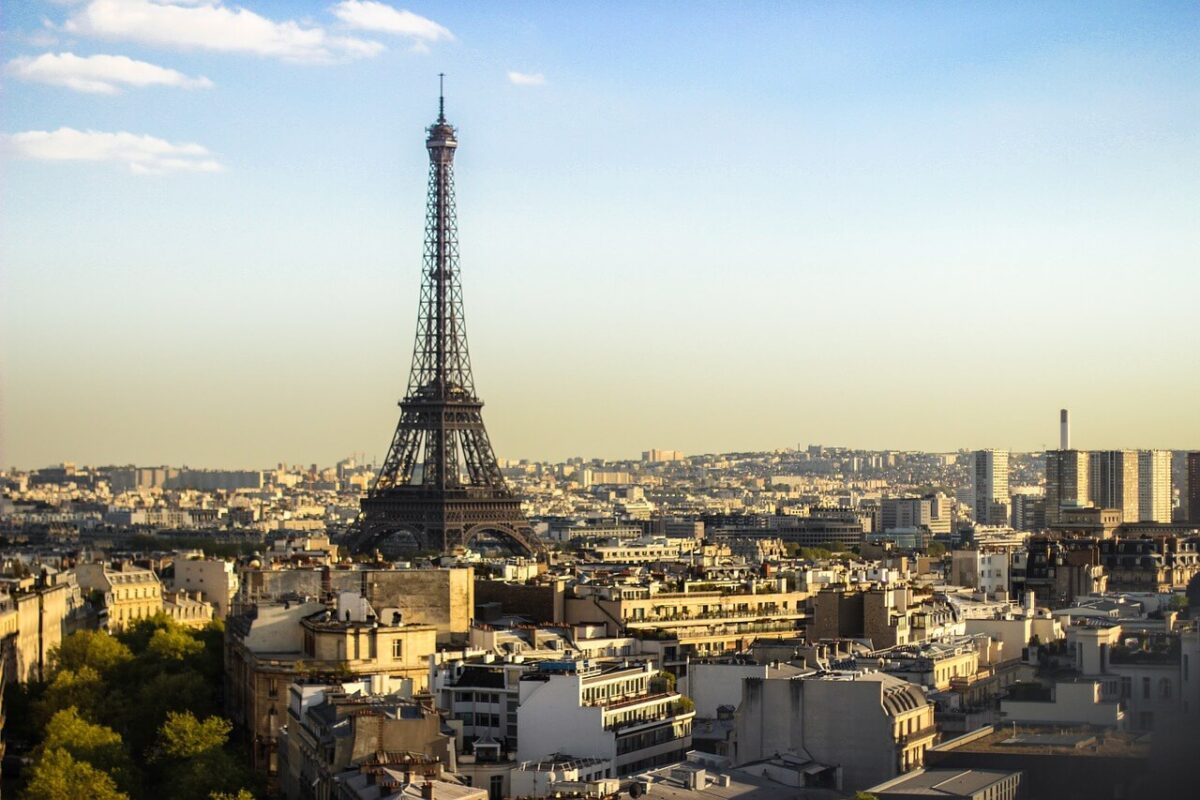Paris Mon Amour
Parlez-vous francais?
I have always loved the music of French. It’s beautiful, elegant and charming. And so is Paris.
As I worked for a French company, I had a chance to visit Paris more often than other cities.
Still, I believe I discovered more of it when I came back to it on a non-business related trip.
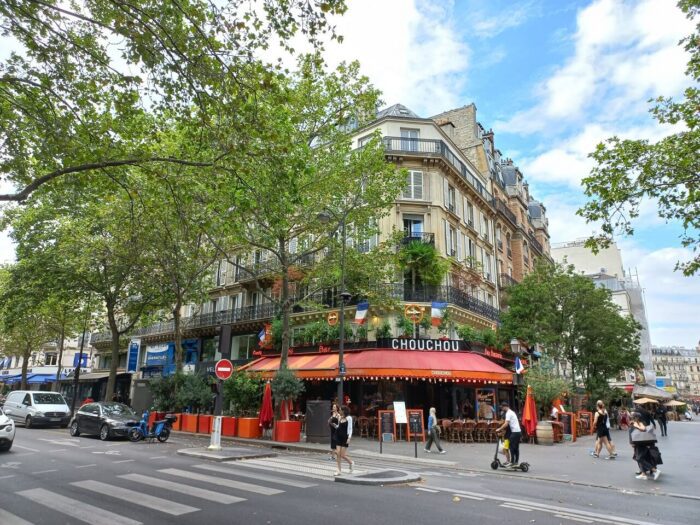
About Paris
Paris is always a good idea.
Sabrina Fairchild (played by Audrey Hepburn in Billy Wilder’s classic “Sabrina”)
Paris, often referred to as the “City of Lights,” is renowned for its timeless charm, effortlessly capturing hearts.
From iconic landmarks to charming streets, every moment in Paris feels like a page from a romantic storybook illuminated by the city’s gentle glow.
Whether you’re exploring world-famous museums, sipping coffee in a cozy café, or enjoying a stroll along the Seine River, the magic of Paris is ever-present.
It’s a destination that welcomes everyone, inviting you to experience the enchantment that has made it a favorite for generations.
In Paris, you will fall in love…
My list of places in Paris you should see
Here’s my list of ten top places to see in Paris (in alphabetical order).
Arc de Triomphe
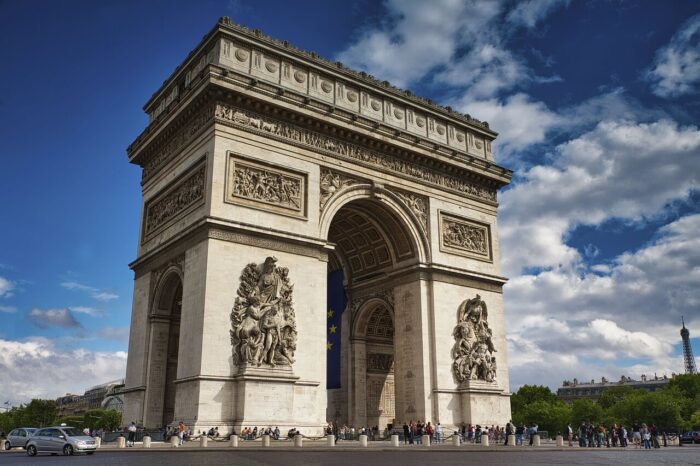
Did you know…?
One lesser-known aspect of the Arc de Triomphe, which might pleasantly surprise visitors, is that beneath this grand monument lies the Tomb of the Unknown Soldier from World War I.
This poignant tribute honors the unidentified French soldiers who lost their lives during the war, symbolizing the sacrifice of countless individuals.
The eternal flame flickering at the tomb adds a solemn touch, representing both remembrance and hope.
What is Arc de Triomphe and why see it?
The Arc de Triomphe, situated at the western end of the Champs-Élysées, stands as a monumental tribute to French military victories and national pride.
Commissioned by Napoleon Bonaparte after the Battle of Austerlitz, it was completed in 1836.
The arch’s colossal size and intricate reliefs, depicting scenes of battle and symbolic victories, showcase neoclassical design at its finest.
The monument holds a central position in the historical axis of Paris and offers panoramic views of the city from its observation deck.
The Arc de Triomphe serves as a symbol of unity, resilience, and France’s enduring spirit, making it a compelling and worthwhile destination for visitors seeking a deeper understanding of the nation’s history and cultural heritage.
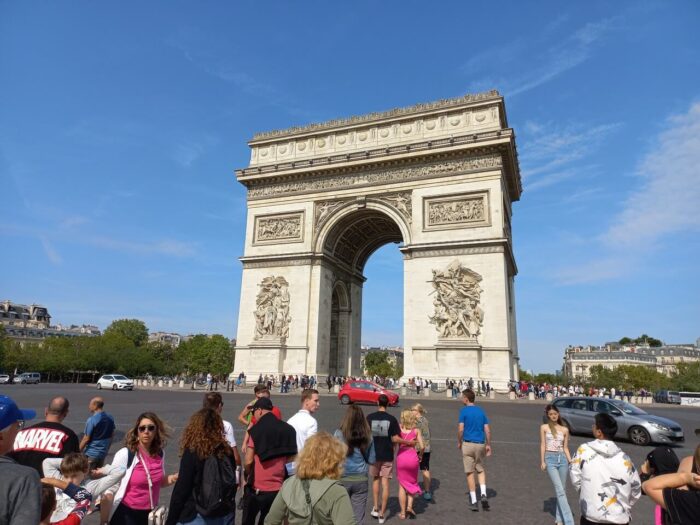
How to enjoy Arc de Triomphe?
To reach the Arc de Triomphe, tourists can navigate the Parisian metro system, with the Charles de Gaulle-Étoile station conveniently located nearby.
Upon arrival, it’s crucial to use the underground passageways for safe access due to the surrounding traffic circle.
While purchasing tickets, visitors should be aware that admission often includes access to the panoramic terrace, providing stunning views of Paris.
More information: Arc de Triomphe website
Champs-Élysées
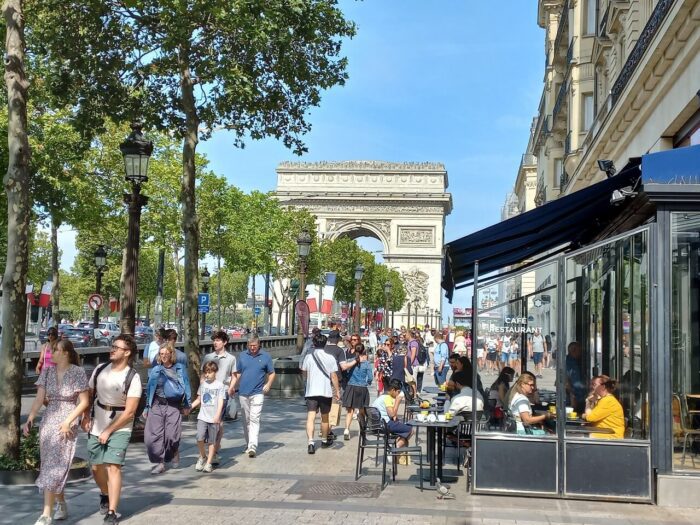
Did you know…?
In 1909, the renowned French aviator, Louis Blériot, made an impressive landing on the Champs-Élysées in his monoplane after completing the world’s first successful flight across the English Channel.
What is Champs-Élysées and why see it?
The Champs-Élysées, often referred to as “the world’s most beautiful avenue,” is a renowned boulevard in the heart of Paris.
Stretching from the Place de la Concorde to the Arc de Triomphe, it boasts a grand tree-lined promenade, upscale boutiques, theaters, and cafés.
The avenue has historical significance, witnessing numerous national events and celebrations, including the Bastille Day parade or the finish of the Tour de France.
Its iconic status is further enhanced by the Arc de Triomphe at its western end, providing a spectacular visual culmination.
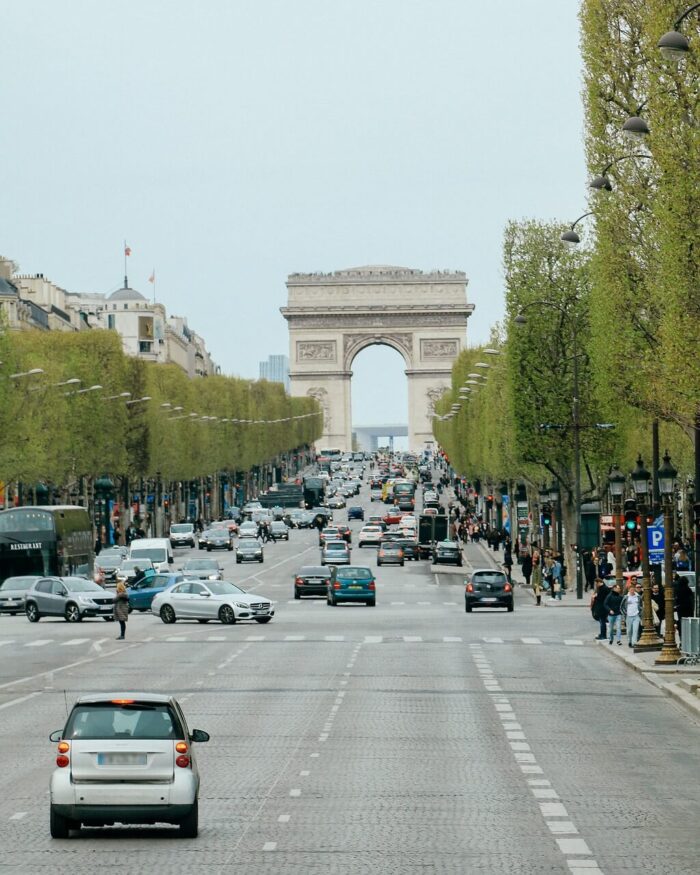
The Champs-Élysées remains a symbol of Parisian elegance, attracting locals and tourists alike.
While the commercial aspect of the avenue has evolved, with luxury shops and theaters dotting its expanse, its cultural and historical importance persists.
The grandeur of the Champs-Élysées, coupled with its central location and historical resonance, makes it a special destination, offering a quintessential Parisian experience for those seeking a blend of shopping, leisure, and cultural exploration.
How to enjoy Champs-Élysées?
Metro stations such as Franklin D. Roosevelt and Charles de Gaulle–Étoile provide easy access to different points along the avenue of Champs-Élysées.
While luxury shops and theaters along the avenue contribute to its allure, visitors should be mindful of potential higher prices in these establishments.
Tourists can benefit from exploring the side streets and adjacent neighborhoods to discover charming boutiques and local cafes.
Being aware of the historical significance and embracing the blend of elegance and cultural richness ensures a fulfilling and enjoyable experience on the Champs-Élysées, making it more than just a shopping destination but a quintessential Parisian experience.
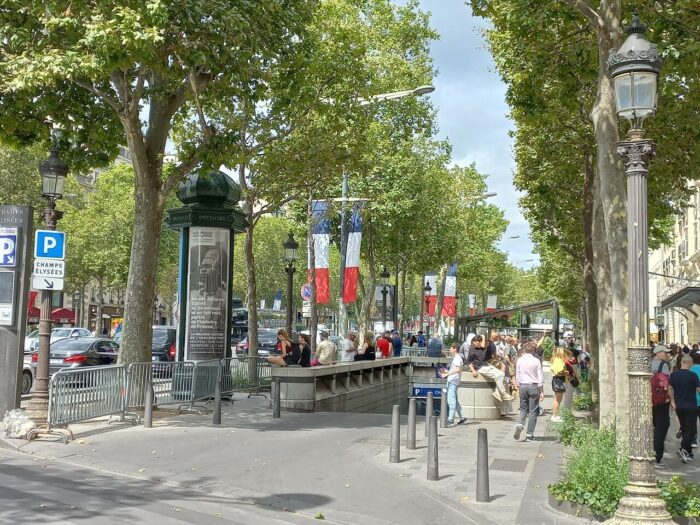
La Défense
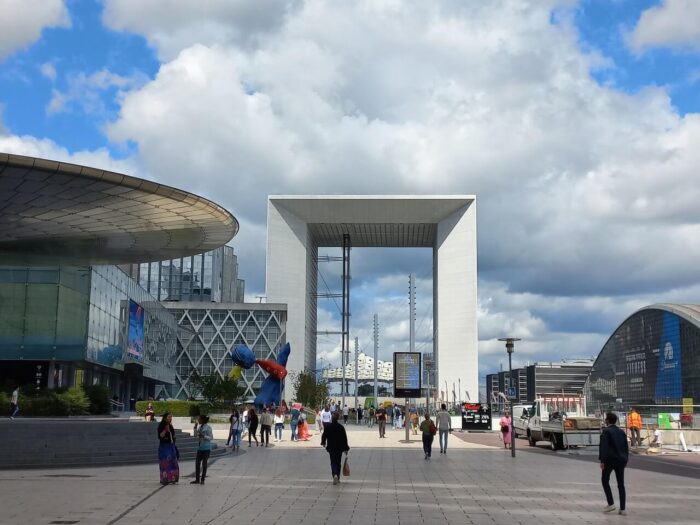
Did you know…?
An intriguing aspect of La Défense, the modern business district in Paris, is the presence of a hidden gem known as the Grande Arche’s rooftop.
Amidst the towering skyscrapers and bustling business environment, few visitors are aware that they can ascend the Grande Arche for a unique panoramic experience.
The rooftop offers an expansive and unobstructed view of Paris, providing a stark contrast to the traditional cityscape found in the heart of the French capital.
Surprisingly, this elevated vantage point allows for a tranquil escape, providing a peaceful perspective on the city’s modernity and urban planning.
The ability to discover a serene retreat in the midst of a bustling business hub adds an unexpected layer to the La Défense experience, making it a must-visit destination for those seeking a different side of Parisian architecture and design.
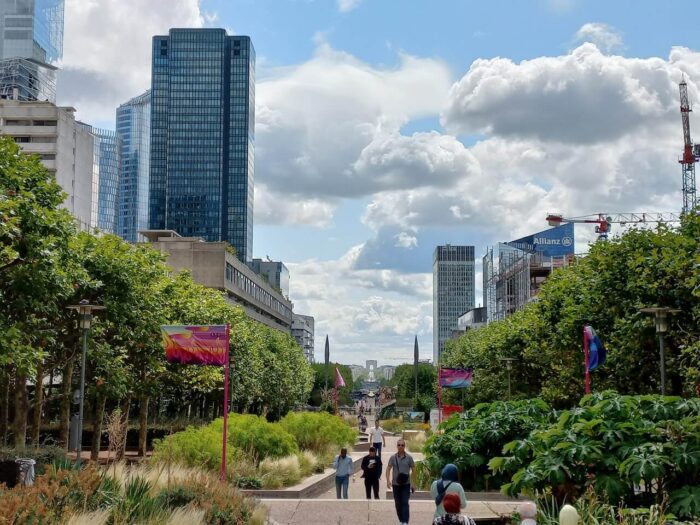
What is La Défense and why see it?
La Défense, situated just west of central Paris, stands as a distinctive business district characterized by its modern architecture and towering skyscrapers.
Renowned as Europe’s largest purpose-built business district, La Défense serves as a hub for multinational corporations, financial institutions, and government offices.
Its skyline is dominated by iconic structures such as the Grande Arche, a monumental arch designed as a modern interpretation of the Arc de Triomphe.
What makes La Défense special is its juxtaposition to the historic charm of central Paris, offering a stark contrast with its contemporary aesthetic.
Visitors can explore outdoor art installations, landscaped public spaces, and a dynamic atmosphere that symbolizes France’s forward-looking approach to business and innovation.
La Défense is worth visiting for those seeking a glimpse into the vibrant modernity and economic prowess of Paris.
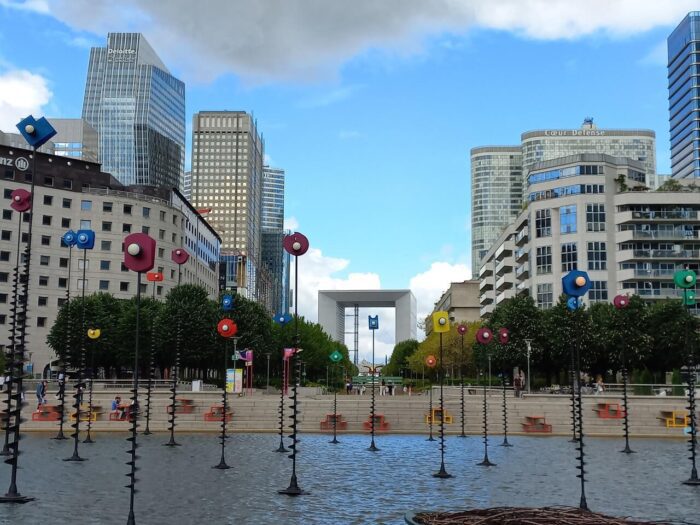
How to enjoy La Défense?
To reach La Défense, tourists can utilize the Parisian public transportation system, notably the metro line 1, with stations like Esplanade de La Défense providing direct access to the district.
Once at La Défense, visitors should be mindful of the vastness of the area and plan their itinerary accordingly, considering the numerous architectural landmarks, shopping centers, and open spaces.
To enjoy the experience to the fullest, it’s recommended to explore the district both during the day and in the evening when the skyscrapers are illuminated.
Additionally, tourists can take advantage of the pedestrian-friendly zones and outdoor art installations, making sure to appreciate the blend of modernity and innovation that defines La Défense.
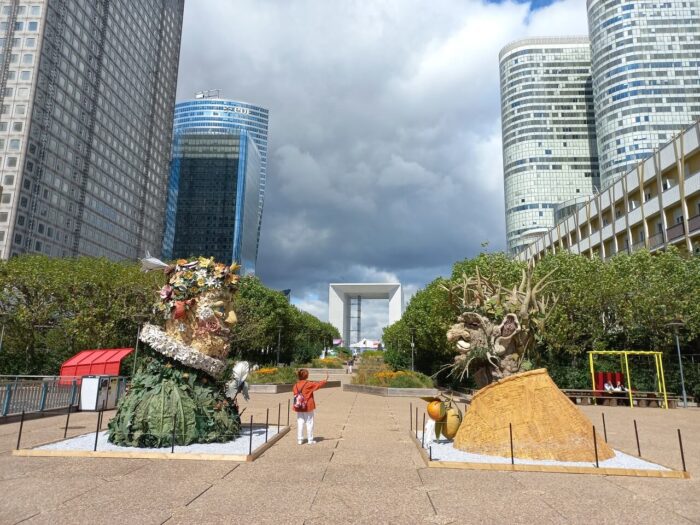
The Eiffel Tower
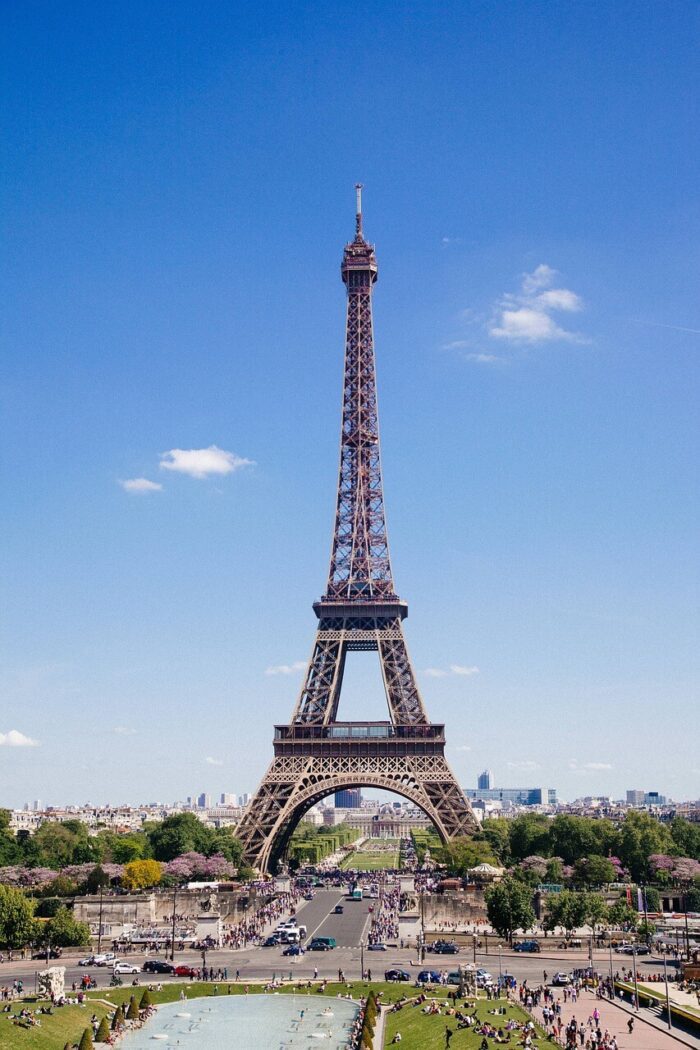
Did you know…?
The Eiffel Tower was initially intended to be a temporary structure.
Built for the 1889 Exposition Universelle (World’s Fair) in Paris to celebrate the 100th anniversary of the French Revolution, the Eiffel Tower was met with skepticism and criticism.
Many Parisians and intellectuals of the time believed the iron lattice structure was an eyesore and clashed with the city’s aesthetic.
Originally planned to stand for just 20 years, the tower narrowly escaped demolition as it proved valuable for communication purposes, particularly during World War I.
Today, the Eiffel Tower stands not only as an enduring symbol of Paris but also as a testament to the unpredictability of architectural fate.
What is the Eiffel Tower and why see it?
The Eiffel Tower, an iconic symbol of Paris and one of the most recognized structures globally, stands as an architectural marvel and an example of engineering prowess.
The Eiffel Tower is an undeniable focal point in any visit to Paris, beckoning visitors with a blend of awe-inspiring views and romantic allure.
Soaring to a height of 324 meters (1,063 ft), the Eiffel Tower offers breathtaking panoramic views of Paris from its observation decks.
Its lattice ironwork design not only contributes to its unique appearance but also allows the tower to withstand wind forces.
Whether viewed from the Trocadéro Gardens at sunrise or admired from the Seine River at sunset, the Eiffel Tower is a magnetic force that captivates the heart and soul, becoming an illustration to the city’s romantic legacy and cultural significance.
Also, do not miss the night view of the Eiffel Tower with its sparkling appearance and the rotating rays of light.
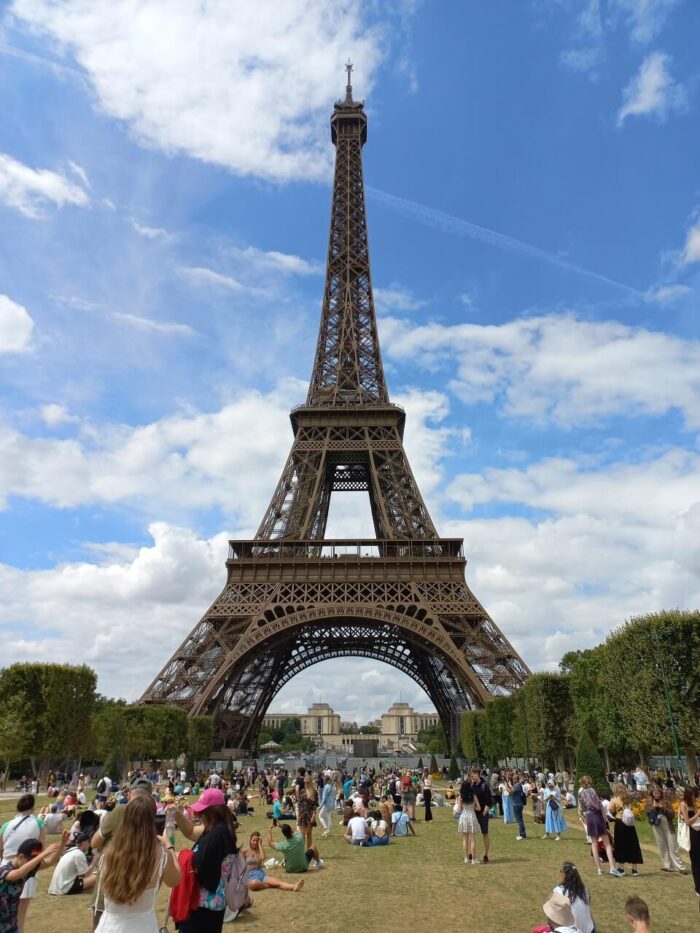
How to enjoy the Eiffel Tower?
Given its size and location, walking the streets of Paris, it is hard to miss the Eiffel Tower.
To get to the Eiffel Tower, opt for public transportation. For best view and experience of the Eiffel Tower, I suggest you head for the Trocadero station of Metro line 9.
Arriving early or during off-peak hours is advisable to minimize crowds, allowing for a more leisurely (if possible at all) exploration of the site.
Be prepared for security checks before ascending the tower, and consider purchasing tickets (online) in advance to avoid long queues.
As you ascend (by lift or by stairs), take time to appreciate the changing views of Paris from each level.
If planning a visit during the evening, the Eiffel Tower’s nightly light show is a captivating spectacle not to be missed.
Whether picnicking on the Champ de Mars or savoring a meal at the tower’s restaurants, incorporating these moments enhances the overall experience, ensuring the Eiffel Tower becomes not just an iconic landmark but a cherished memory of your time in Paris.
More information: The Eiffel Tower website
The Latin Quarter
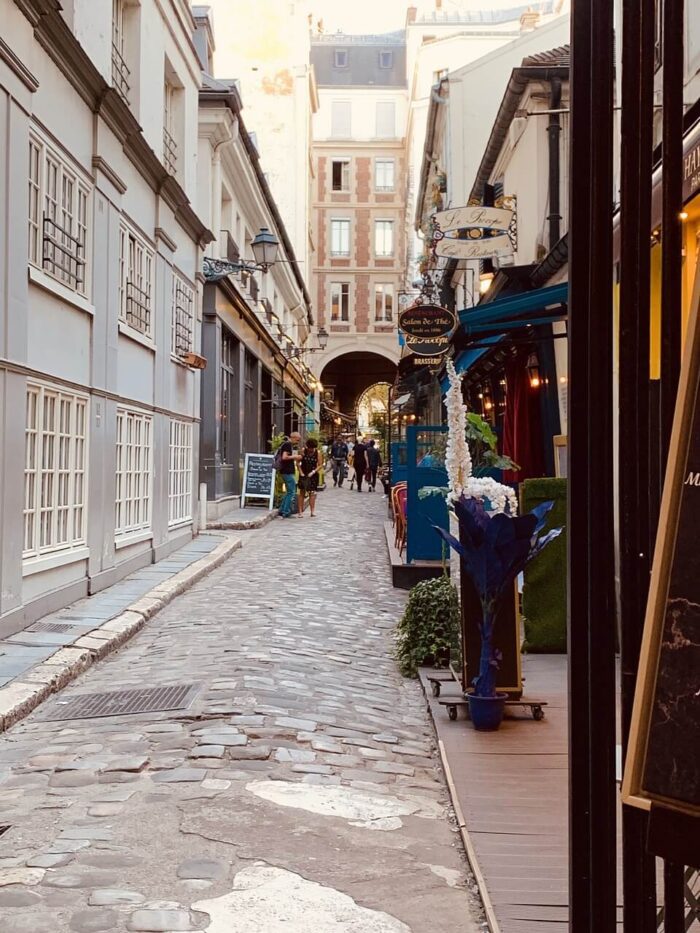
Did you know…?
A little-known gem within the vibrant Latin Quarter of Paris is the Arènes de Lutèce, an ancient Roman amphitheater tucked away amidst the bustling streets.
Often overshadowed by more famous landmarks, this archaeological treasure is a surprise find for many visitors.
Dating back to the 1st century AD, the Arènes de Lutèce once hosted gladiator contests and public spectacles.
Today, it stands as a quiet oasis where locals gather for leisure, picnics, and petanque matches.
The amphitheater’s well-preserved ruins provide a unique peek into Paris’s Roman past, offering an unexpected and enriching experience for those exploring the Latin Quarter.
The site serves as a testament to the city’s layered history, seamlessly blending ancient ruins with the contemporary life of this lively and intellectual neighborhood.
What is the Latin Quarter and why see it?
The Latin Quarter in Paris, situated on the left bank of the Seine River, is a historically rich and intellectually vibrant neighborhood renowned for its bohemian atmosphere and academic institutions.
Characterized by narrow winding streets, medieval architecture, and lively cafes, the Latin Quarter earned its name due to the prevalent use of Latin as the language of instruction in the area during the Middle Ages.
Home to the Sorbonne University, this district has long been a hub for students, scholars, and intellectuals, fostering an environment of creativity and learning.
The Latin Quarter is special for its fusion of old-world charm with a dynamic cultural scene, offering a plethora of bookshops, galleries, and theaters.
Visitors can explore iconic landmarks such as the Panthéon and the Luxembourg Gardens, while also indulging in the vibrant street life and diverse culinary offerings.
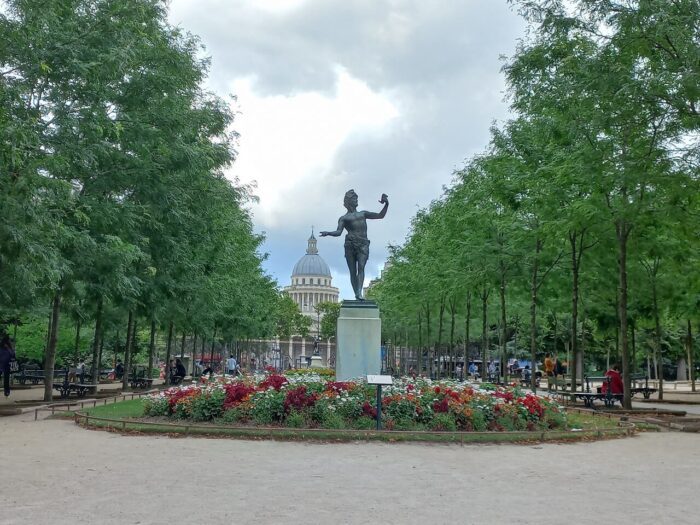
The Latin Quarter’s unique blend of history, academia, and contemporary flair makes it a captivating destination, inviting tourists to immerse themselves in the intellectual and cultural heart of Paris.
How to enjoy the Latin Quarter?
To access the Latin Quarter in Paris, tourists can utilize the city’s public transportation system, particularly the metro lines 4, 7, and 10, with stops such as Cluny-La Sorbonne and Saint-Michel Notre-Dame providing convenient entry points.
Once in the Latin Quarter, visitors should be aware of the district’s labyrinthine layout, characterized by narrow streets and hidden gems, making it ideal for exploration on foot.
Embracing spontaneity and wandering through the vibrant streets can lead to unexpected discoveries.
While enjoying the area’s cultural and intellectual attractions, such as the Panthéon and the Sorbonne, it’s recommended to venture into the charming side streets to find local cafes, bookshops, and boutiques.
Being mindful of the diverse student population, tourists can also benefit from engaging in the spirited and intellectual ambiance that defines this historic neighborhood, adding depth to their experience in the Latin Quarter.
The Louvre
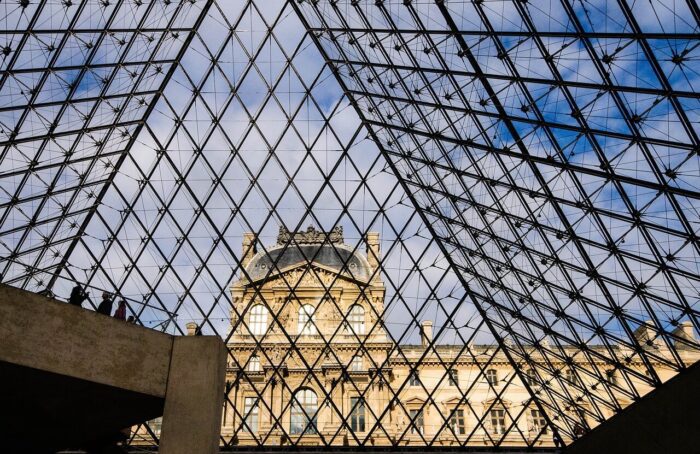
Did you know…?
Leonardo Da Vinci’s Mona Lisa that you can see at The Louvre found its way to France through a series of historical events.
Painted by da Vinci in the early 16th century, the artwork eventually came into the possession of King Francis I of France.
Leonardo took the painting with him to France when he moved there in the later years of his life.
After Leonardo’s death, the Mona Lisa remained in the French royal collection.
In the 19th century, during the French Revolution, many artworks were transferred to the Louvre, including the Mona Lisa.
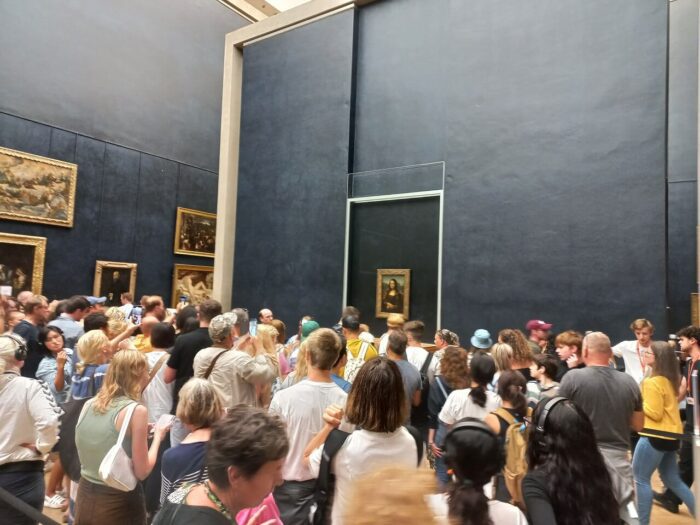
What is The Louvre and why see it?
The Louvre, situated in the heart of Paris along the right bank of the Seine River, is one of the world’s most renowned and visited art museums.
Originally constructed as a fortress in the late 12th century, it later transformed into a royal palace and eventually became a public museum during the French Revolution.
The Louvre’s monumental significance lies in its vast and diverse collection, encompassing over 35,000 works of art, including the iconic Mona Lisa and the Venus de Milo.
Its rich holdings span from ancient civilizations to the 19th century, showcasing art and artifacts from various cultures.
The museum’s architectural grandeur, marked by the iconic glass pyramid at its entrance, adds to its allure.
The Louvre’s global acclaim stems from its role as a custodian of human artistic achievement, making it a cultural pilgrimage for art enthusiasts and tourists alike.
The immersive experience of navigating its labyrinthine halls and encountering masterpieces from different eras renders the Louvre a special and indispensable destination for those seeking to explore the depths of human creativity and history.
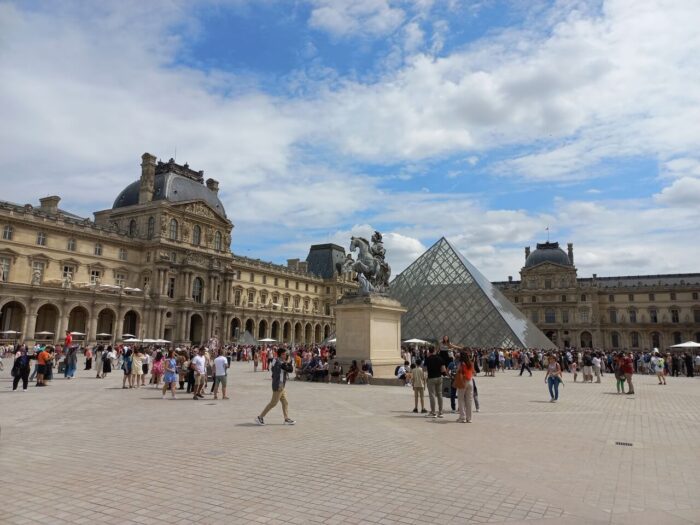
How to enjoy The Louvre?
The Palais Royal–Musée du Louvre metro station is a convenient entry point, and various bus routes also serve the area.
Tourists should be mindful of peak hours and consider pre-booking tickets online to streamline entry and avoid long queues.
Additionally, the Louvre’s vast collection can be overwhelming, so having a specific focus or itinerary can help visitors make the most of their time and interests.
More information: The Louvre website
Le Marais
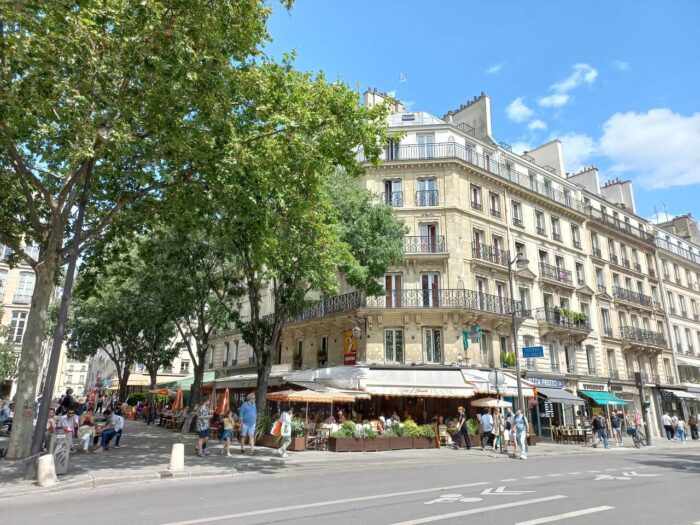
Did you know…?
A delightful but lesser-known facet of Le Marais, the historic district in Paris, is its connection to the Jewish community.
Tucked away in the heart of Le Marais is the Pletzl, a charming enclave that has been a hub for Jewish culture since the late 19th century.
Amidst the narrow cobblestone streets and medieval buildings, visitors might be surprised to discover a rich tapestry of Jewish history, traditions, and eateries.
Le Marais has long been home to a thriving Jewish community, and exploring this area unveils synagogues, kosher bakeries, and vibrant markets that add a unique cultural layer to the district’s eclectic charm.
The Pletzl serves as a testament to the diverse and dynamic history woven into the fabric of Le Marais, offering a delightful surprise for those seeking a deeper understanding of the district’s cultural tapestry.
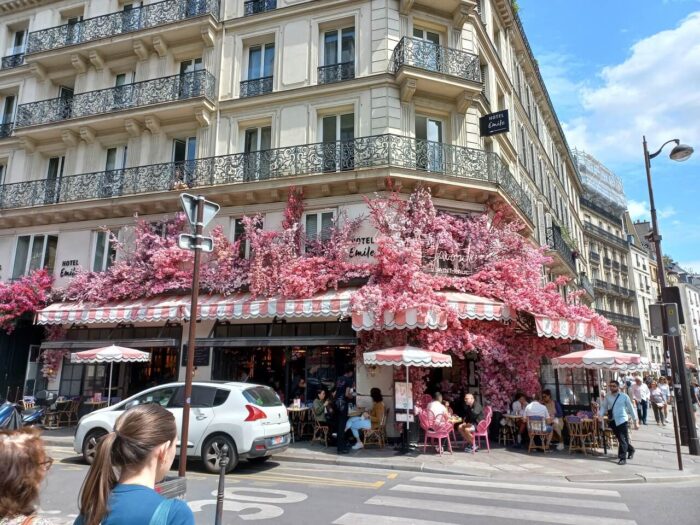
What is Le Marais and why see it?
Le Marais is a historically rich district celebrated for its unique blend of medieval charm and trendy urban vibes.
Renowned for its narrow cobblestone streets, preserved medieval architecture, and vibrant atmosphere, Le Marais stands as a testament to the city’s diverse cultural and architectural heritage.
This area, once the aristocratic center of Paris, has transformed into a melting pot of art galleries, boutiques, cafes, and museums.
Visitors can explore notable landmarks such as the Place des Vosges, one of the oldest squares in Paris, and the Hôtel de Ville, the city’s town hall.
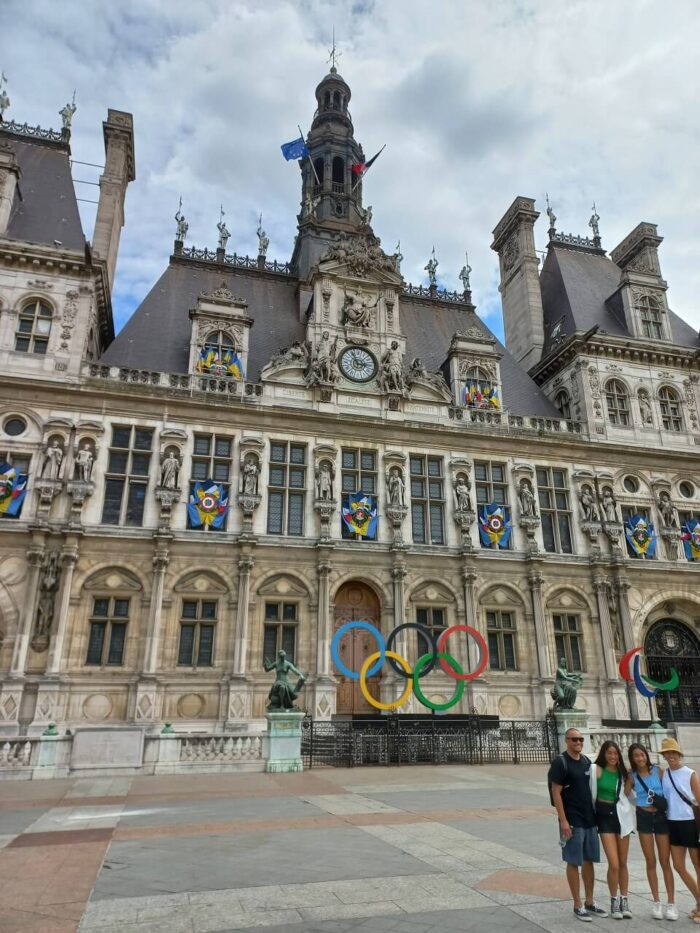
Le Marais is also a prominent LGBTQ+ hub, adding to its inclusive and progressive ambiance.
The district’s allure lies in its ability to seamlessly blend historical significance with contemporary flair, making it a captivating destination for those seeking a taste of both old-world Parisian charm and modern cultural diversity.
How to enjoy Le Marais?
To reach Le Marais, tourists can use Paris’s public transportation system, with metro lines 1, 4, and 7 serving the district. Stations such as Saint-Paul and Hôtel de Ville provide convenient access.
Once in Le Marais, visitors should be aware of the district’s expansive layout and plan their itinerary accordingly, considering the diverse range of attractions, from historic sites to contemporary boutiques.
Exploring the area on foot is highly recommended to fully appreciate the narrow winding streets and hidden gems.
To make the most of the experience, it’s worthwhile to embrace the district’s eclectic spirit, sample local cuisine, and immerse oneself in the vibrant street life.
By being mindful of these factors, tourists can ensure a fulfilling and enjoyable exploration of the unique charm that Le Marais has to offer.
More information: Le Marais website
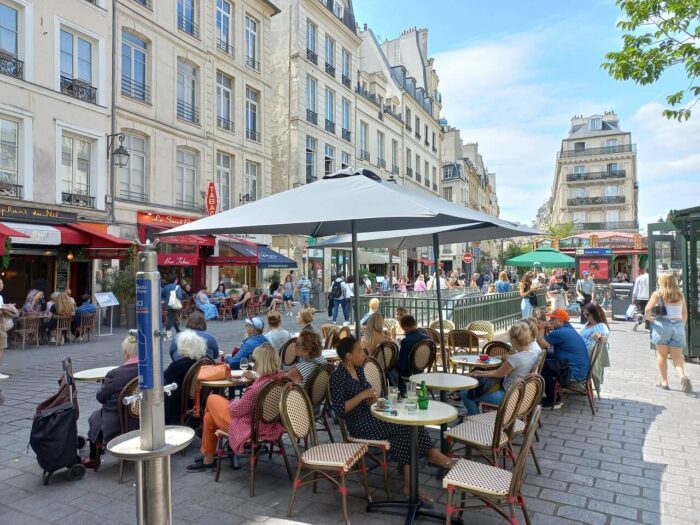
Montmartre
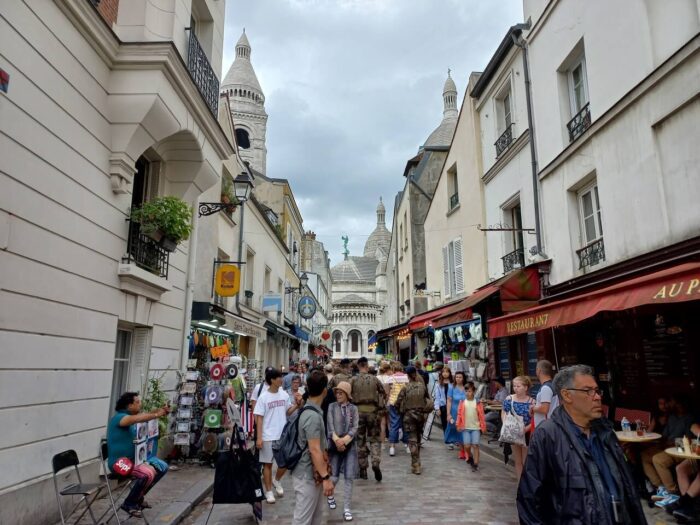
Did you know…?
While many are familiar with the artistic legacy of Montmartre, it might come as a surprise that this bohemian neighborhood was also home to the world’s first movie theater.
In 1895, the Lumière brothers, pioneers of cinema, screened one of their first films at the Grand Café on Boulevard des Capucines, marking the birth of cinema.
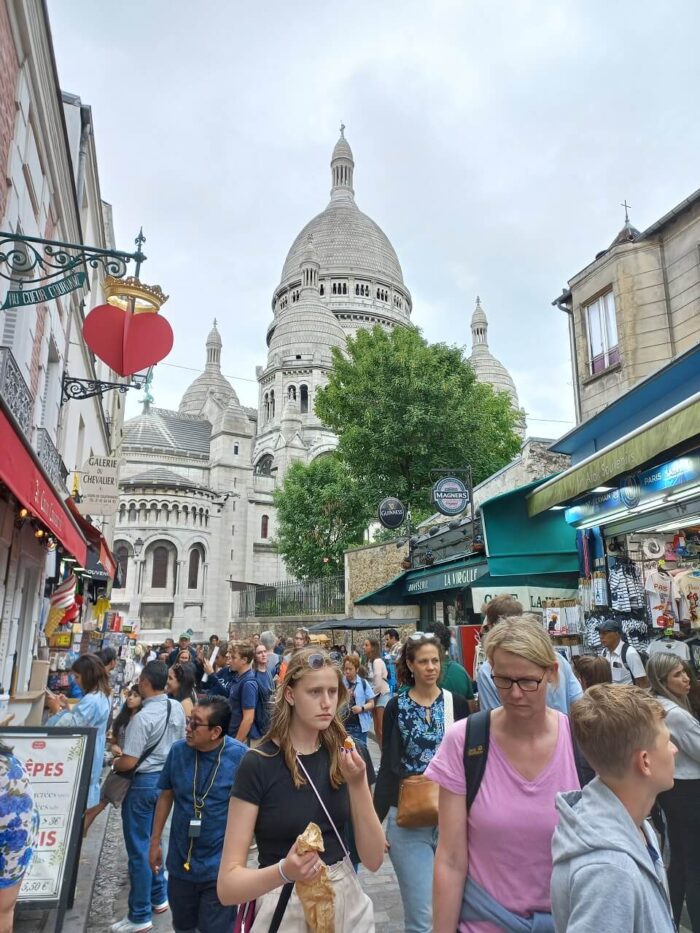
What is Montmartre and why see it?
Montmartre, located on a hill in the northern part of Paris, is a captivating and historic neighborhood renowned for its artistic legacy and unique ambiance.
This bohemian quarter became a haven for artists, including Picasso and Van Gogh, during the late 19th and early 20th centuries.
The Sacré-Cœur Basilica atop the hill offers panoramic views of the city, enhancing Montmartre’s appeal.
Its narrow, cobbled streets are adorned with charming cafés, art studios, and the iconic Place du Tertre, where local artists showcase their work.
Montmartre’s historic cabarets, such as the Moulin Rouge, add a touch of glamour to its cultural allure.
The neighborhood’s artistic heritage, combined with its distinctive architecture and panoramic vistas, makes Montmartre a special and must-visit destination for those seeking a blend of art, history, and the quintessential Parisian atmosphere.
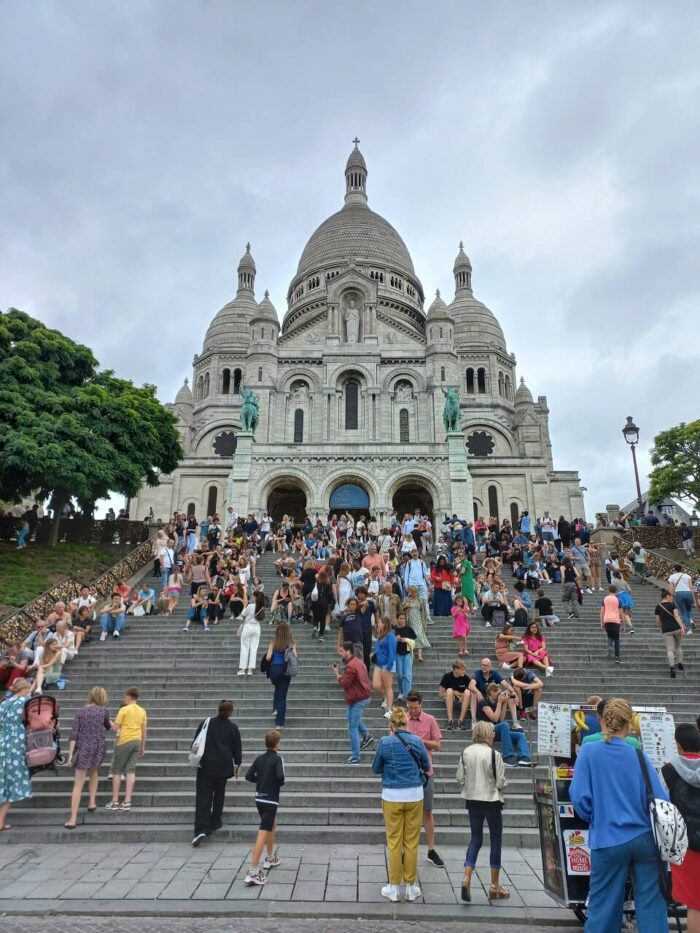
How to enjoy Montmartre?
Accessing Montmartre is easily facilitated by the Paris Metro, with stations like Anvers and Abbesses serving the area.
Alternatively, visitors can enjoy a leisurely stroll up the hill, reveling in the atmospheric streets and charming architecture.
While at the Place du Tertre, where artists display their work, tourists should be aware of potential crowds.
Exploring the Sacré-Cœur Basilica is a must, offering not only a spiritual experience but also stunning panoramic views of Paris.
Additionally, taking the time to venture beyond the well-trodden paths and discover hidden gems like lesser-known cafés and studios adds an extra layer of authenticity to the Montmartre experience.
Overall, embracing the artistic and bohemian essence of Montmartre ensures a fulfilling and enjoyable visit to this unique Parisian neighborhood.
More information: The Sacré-Cœur Basilica website
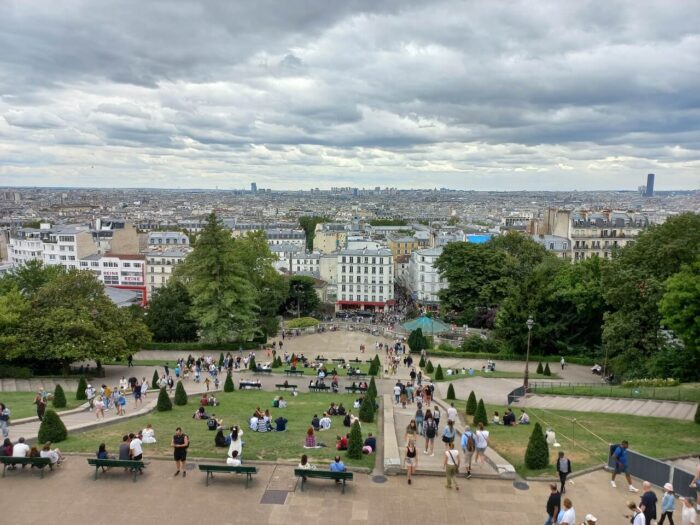
Notre-Dame
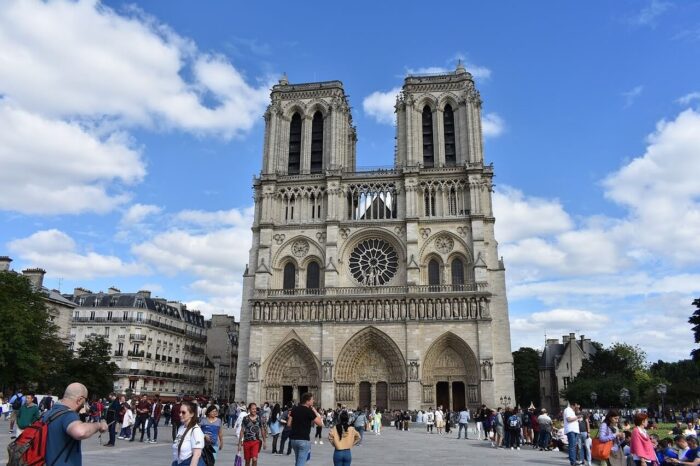
Did you know…?
A lesser-known fact about Notre-Dame Cathedral is its menagerie of mystical creatures adorning the structure.
Among the intricate gargoyles and grotesques, there is a whimsical figure known as “Stryge” – a mythical creature resembling a winged female demon.
Located on the Gallery of Chimères, this unique and less-explored character adds a touch of mystery and folklore to the iconic cathedral.
While often overshadowed by the tragic fire in 2019, these whimsical details highlight the rich and imaginative craftsmanship that contributes to the cultural tapestry of Notre-Dame, providing visitors with a delightful discovery amidst the grandeur of the cathedral’s architectural marvels.
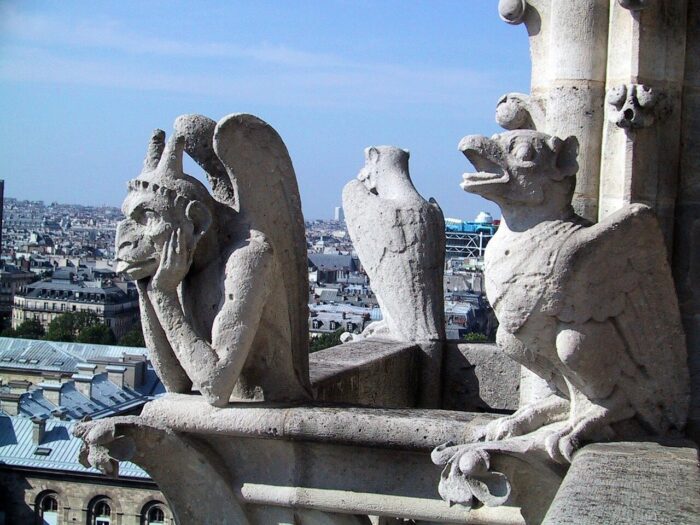
What is Notre-Dame and why see it?
Notre-Dame Cathedral, situated on the Île de la Cité in the heart of Paris, is a historic and architectural masterpiece that holds immense cultural significance.
Construction began in the 12th century and continued for nearly two hundred years, resulting in a stunning example of French Gothic architecture.
The cathedral’s iconic twin towers, intricate rose windows, and flying buttresses showcase the craftsmanship and artistic prowess of its builders.
Notre-Dame has played a central role in French history, witnessing royal events and serving as a symbol of national identity.
Its interior, adorned with intricate sculptures and stained glass, further contributes to its cultural richness.
While the devastating fire in 2019 led to extensive restoration efforts, the cathedral remains a must-visit destination, offering a profound experience of history, art, and spiritual heritage in the heart of Paris.
The enduring allure of Notre-Dame lies not only in its architectural splendor but also in its role as a living testament to centuries of French culture and craftsmanship.
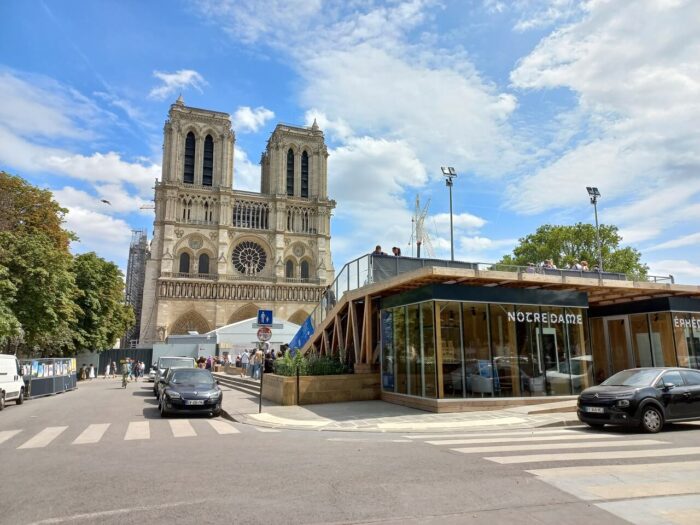
How to enjoy Notre-Dame?
Notre-Dame Cathedral is situated on the Île de la Cité.
Visitors can find the cathedral’s main entrance from the Place du Parvis.
As of the time of writing of this post, the Cathedral is closed for visitors with the planned re-opening for December 2024.
Overall, approaching Notre-Dame with an understanding of its historical significance and a willingness to immerse oneself in the rich cultural ambiance ensures a fulfilling and enjoyable visit to this iconic Parisian landmark.
More information: Notre-Dame website
Versailles
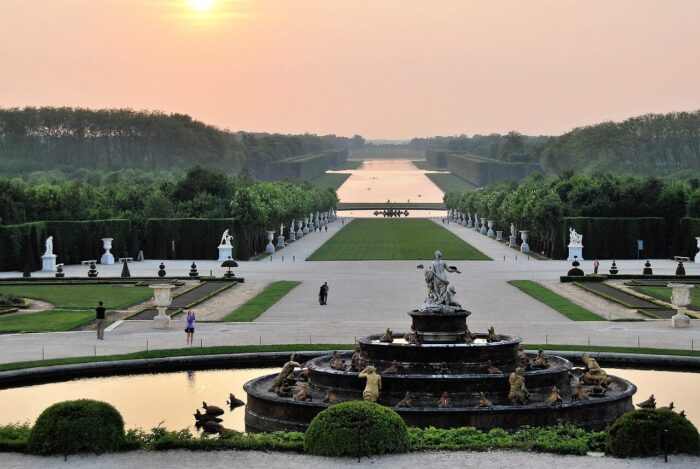
Did you know…?
A lesser-known historical detail about Versailles lies in its transformation during the French Revolution.
While the opulent palace is often associated with the monarchy, during the revolution, it underwent a significant shift.
The revolutionary government repurposed the grandeur of Versailles, turning it into a Museum of French History in 1837.
This transformation aimed to repurpose the symbol of monarchy into a repository of national history.
The evolution from a royal residence to a public museum marked a pivotal moment, reflecting the changing political landscape and the desire to redefine the narrative of Versailles.
Today, visitors can explore not only the extravagant halls of the former palace but also engage with the layers of history that include the revolutionary era and its impact on this iconic landmark.
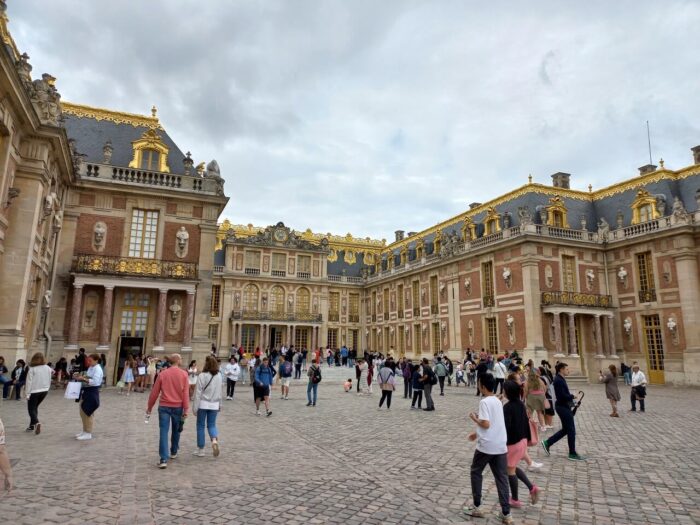
What is Versailles and why see it?
Versailles, located just outside Paris, is an iconic palace renowned for its historical significance, opulent architecture, and extensive gardens.
Constructed in the 17th century under the reign of Louis XIV, the palace served as the principal residence of French kings until the French Revolution.
Its grandeur is evident in the Hall of Mirrors, the lavish apartments, and the sprawling gardens designed by André Le Nôtre.
Versailles is special for its role in shaping French history, particularly during the absolutist monarchy, and its cultural significance as a symbol of power and artistic achievement.
Visitors can explore the intricately decorated rooms, marvel at the Hall of Mirrors where the Treaty of Versailles was signed in 1919, and wander through the meticulously landscaped gardens featuring fountains, statues, and the Grand Canal.
The blend of history, art, and landscape design makes Versailles a captivating destination, providing a glimpse into the splendor of the French monarchy and its enduring cultural legacy.
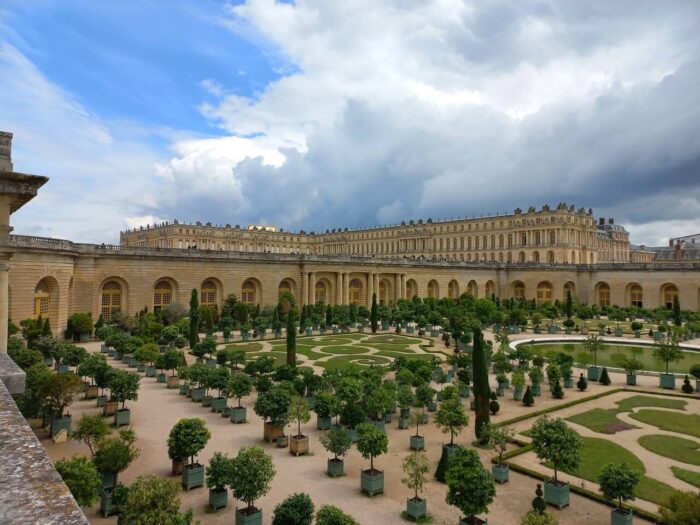
How to enjoy Versailles?
To reach Versailles from Paris, tourists can conveniently take the RER C train, with Versailles-Rive Gauche being the designated station.
The journey takes approximately 45 minutes, and the train departs from several locations in Paris.
Entry tickets to the palace and the gardens should be purchased online in advance to avoid long lines.
Exploring the palace and gardens may take several hours, so comfortable footwear is recommended.
Tourists should also keep in mind the seasonal variations, as the gardens and fountains are more vibrant during the warmer months.
More information: The Palace of Versailles website
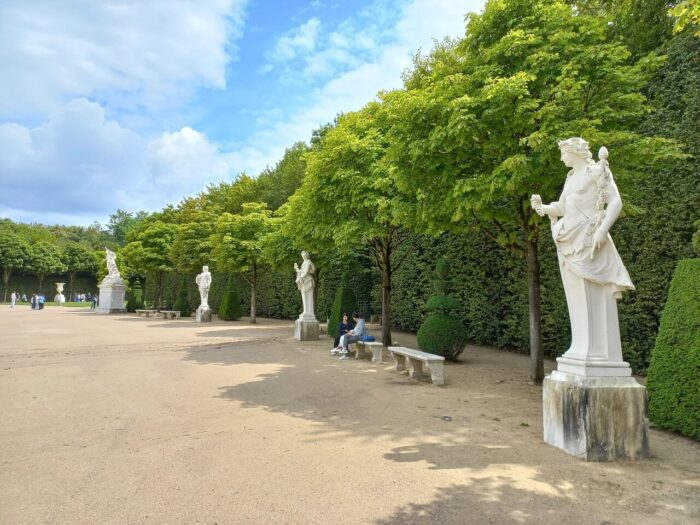
Conclusion
The above list of places to see in Paris is by no means complete.
What is wonderful about Paris, however, is that when you stroll from one landmark to another, you can discover places than might not be that famous but can be as charming as the ones I described in this post.
Remember that “Paris is always a good idea”.
Happy travel
Marcin
My top places to see in Paris
- Arc de Triomphe
- Champs-Élysées
- La Défense
- The Eiffel Tower
- The Latin Quarter
- The Louvre
- Le Marais
- Montmartre
- Notre-Dame
- Versailles
Useful links
Looking for more inspiration for places to visit?
The Best Of Europe: Top 10 Iconic Cities To Visit?
The Best Of North America: Your Ultimate Guide To 10 Most Vibrant Cities?

